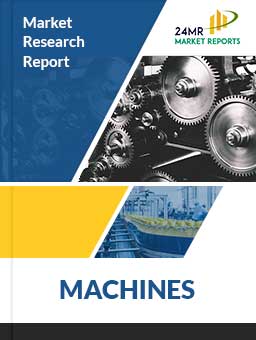
COMPANIES COVERED
DeLonghiDownload FREE Report Sample
Download Free samplePiston Espresso Machines, also known as manual espresso machines, are a specialized type of coffee brewing device that requires user involvement to manually control the brewing pressure. These machines use a piston to force hot water through finely-ground coffee, enabling users to extract espresso shots with precision. Unlike automatic machines, piston variants provide a hands-on experience and are popular among coffee enthusiasts and baristas for the control they offer over the brewing variables.
The piston espresso machine market is a prominent segment of the global coffee machine industry. With increasing coffee consumption worldwide, driven by changing lifestyles, growing urbanization, and rising café culture, the demand for high-quality espresso machines has surged. Piston machines, in particular, are favored for their mechanical simplicity, durability, and the unique quality of coffee they produce.
Market Size
Global Piston Espresso Machines market was valued at USD 2,765 million in 2024 and is projected to reach USD 4,073.80 million by 2032, growing at a CAGR of 4.40% during the forecast period.
This growth is supported by the rise in consumer interest in artisanal and specialty coffee, along with increased expenditure on premium kitchen appliances.
In North America, the market was estimated at USD 775.85 million in 2024, with a CAGR of 3.77% forecasted through 2032. The regional market is primarily driven by a strong coffee culture, growing awareness of coffee quality, and the increasing popularity of home brewing.
To know more about market statistics, Download a FREE Sample copy
Market Dynamics (Drivers, Restraints, Opportunities, and Challenges)
Drivers
Rising Coffee Consumption Globally: Worldwide trends toward higher coffee consumption and the desire for premium, café-style beverages at home are boosting demand.
Preference for Specialty Coffee: Consumers are increasingly favoring specialty and third-wave coffee, which enhances the demand for precise and quality-focused brewing machines like piston espresso machines.
Increased Disposable Income: Higher spending capabilities in emerging markets have led to greater adoption of premium coffee appliances.
Cultural Influence and Urbanization: Urban dwellers and millennials, who are more exposed to international lifestyles, are major contributors to market growth.
Restraints
High Initial Cost: Piston espresso machines tend to be more expensive than pod or drip machines, which can limit their appeal to cost-conscious consumers.
Steep Learning Curve: These machines require user expertise, which might deter casual users preferring convenience over manual control.
Opportunities
Growth in E-commerce Channels: Online platforms are enabling small and mid-sized manufacturers to reach global consumers more effectively.
Rising Café Startups in Developing Regions: Emerging economies are witnessing a boom in local cafés and roasteries, creating significant B2B opportunities.
Customization and Smart Features: Innovations like temperature control, built-in grinders, and app connectivity could make piston machines more appealing to tech-savvy users.
Challenges
Maintenance and Complexity: The manual components can be more prone to wear and require regular upkeep.
Competition from Other Brewing Technologies: Capsule machines and bean-to-cup systems offer more convenience and are becoming increasingly popular.
Regional Analysis
North America
Europe
Asia-Pacific
South America
Middle East and Africa
Competitor Analysis (in brief)
The global piston espresso machine market is moderately fragmented, with a mix of global giants and niche manufacturers. Key players differentiate through brand value, product innovation, and distribution reach.
DeLonghi, Jura, and Philips (Saeco) dominate the consumer segment with a focus on semi-automatic machines.
La Marzocco, Nuova Simonelli, and La Pavoni cater to the commercial sector with durable, performance-driven machines.
Breville and Nespresso offer well-branded, user-friendly products with growing consumer trust.
Emerging brands like Ascaso and Profitec are gaining traction among enthusiasts looking for handmade quality and customization.
Brand reputation, after-sales service, and product reliability are central to competitive positioning.
Global Piston Espresso Machines Market: Market Segmentation Analysis
Piston Espresso Machines Market provides a deep insight into the global Piston Espresso Machines market covering all its essential aspects. This ranges from a macro overview of the market to micro details of the market size, competitive landscape, development trend, niche market, key market drivers and challenges, SWOT analysis, value chain analysis, etc.
The analysis helps the reader to shape the competition within the industries and strategies for the competitive environment to enhance the potential profit. Furthermore, it provides a simple framework for evaluating and assessing the position of the business organization. The report structure also focuses on the competitive landscape of the Global Piston Espresso Machines. Piston Espresso Machines Market introduces in detail the market share, market performance, product situation, operation situation, etc., of the main players, which helps the readers in the industry to identify the main competitors and deeply understand the competition pattern of the market.
In a word, Piston Espresso Machines Market is a must-read for industry players, investors, researchers, consultants, business strategists, and all those who have any kind of stake or are planning to foray into the Piston Espresso Machines in any manner.
Market Segmentation (by Application)
Market Segmentation (by Type)
Key Company
Geographic Segmentation
North America (USA, Canada, Mexico)
Europe (Germany, UK, France, Russia, Italy, Rest of Europe)
Asia-Pacific (China, Japan, South Korea, India, Southeast Asia, Rest of Asia-Pacific)
South America (Brazil, Argentina, Columbia, Rest of South America)
The Middle East and Africa (Saudi Arabia, UAE, Egypt, Nigeria, South Africa, Rest of MEA)
FAQ
What is the current market size of Piston Espresso Machines?
Which are the key companies operating in the Piston Espresso Machines market?
What are the key growth drivers in the Piston Espresso Machines market?
Which regions dominate the Piston Espresso Machines market?
What are the emerging trends in the Piston Espresso Machines market?
Key Benefits of This Market Research:
Industry drivers, restraints, and opportunities covered in the study
Neutral perspective on the market performance
Recent industry trends and developments
Competitive landscape & strategies of key players
Potential & niche segments and regions exhibiting promising growth covered
Historical, current, and projected market size, in terms of value
In-depth analysis of the Piston Espresso Machines Market
Overview of the regional outlook of the Piston Espresso Machines Market:
Key Reasons to Buy this Report:
Access to date statistics compiled by our researchers. These provide you with historical and forecast data, which is analyzed to tell you why your market is set to change
This enables you to anticipate market changes to remain ahead of your competitors
You will be able to copy data from the Excel spreadsheet straight into your marketing plans, business presentations, or other strategic documents
The concise analysis, clear graph, and table format will enable you to pinpoint the information you require quickly
Provision of market value data for each segment and sub-segment
Indicates the region and segment that is expected to witness the fastest growth as well as to dominate the market
Analysis by geography highlighting the consumption of the product/service in the region as well as indicating the factors that are affecting the market within each region
Competitive landscape which incorporates the market ranking of the major players, along with new service/product launches, partnerships, business expansions, and acquisitions in the past five years of companies profiled
Extensive company profiles comprising of company overview, company insights, product benchmarking, and SWOT analysis for the major market players
The current as well as the future market outlook of the industry concerning recent developments which involve growth opportunities and drivers as well as challenges and restraints of both emerging as well as developed regions
Includes in-depth analysis of the market from various perspectives through Porters five forces analysis
Provides insight into the market through Value Chain
Market dynamics scenario, along with growth opportunities of the market in the years to come
6-month post-sales analyst support
Customization of the Report
In case of any queries or customization requirements, please connect with our sales team, who will ensure that your requirements are met.
Chapter Outline
Chapter 1 mainly introduces the statistical scope of the report, market division standards, and market research methods.
Chapter 2 is an executive summary of different market segments (by region, product type, application, etc), including the market size of each market segment, future development potential, and so on. It offers a high-level view of the current state of the Piston Espresso Machines Market and its likely evolution in the short to mid-term, and long term.
Chapter 3 makes a detailed analysis of the market's competitive landscape of the market and provides the market share, capacity, output, price, latest development plan, merger, and acquisition information of the main manufacturers in the market.
Chapter 4 is the analysis of the whole market industrial chain, including the upstream and downstream of the industry, as well as Porter's five forces analysis.
Chapter 5 introduces the latest developments of the market, the driving factors and restrictive factors of the market, the challenges and risks faced by manufacturers in the industry, and the analysis of relevant policies in the industry.
Chapter 6 provides the analysis of various market segments according to product types, covering the market size and development potential of each market segment, to help readers find the blue ocean market in different market segments.
Chapter 7 provides the analysis of various market segments according to application, covering the market size and development potential of each market segment, to help readers find the blue ocean market in different downstream markets.
Chapter 8 provides a quantitative analysis of the market size and development potential of each region from the consumer side and its main countries and introduces the market development, future development prospects, market space, and capacity of each country in the world.
Chapter 9 shares the main producing countries of Piston Espresso Machines, their output value, profit level, regional supply, production capacity layout, etc. from the supply side.
Chapter 10 introduces the basic situation of the main companies in the market in detail, including product sales revenue, sales volume, price, gross profit margin, market share, product introduction, recent development, etc.
Chapter 11 provides a quantitative analysis of the market size and development potential of each region during the forecast period.
Chapter 12 provides a quantitative analysis of the market size and development potential of each market segment during the forecast period.
Chapter 13 is the main points and conclusions of the report.

Speak to our Custom Research Team and get the Custom Research in a budget
Custom ResearchFrequently Asked Questions ?
A license granted to one user. Rules or conditions might be applied for e.g. the use of electric files (PDFs) or printings, depending on product.
A license granted to multiple users.
A license granted to a single business site/establishment.
A license granted to all employees within organisation access to the product.
Upto Working 24 to 48 hrs
Upto 72 hrs max - Weekends and Public Holidays
Online Payments with PayPal and CCavenue
Wire Transfer/Bank Transfer
Hard Copy




 Industry Market Size
Industry Market Size SWOT Analysis
SWOT Analysis Industry Major Players
Industry Major Players Revenue Forecasts
Revenue Forecasts Historical and Forecast Growth
Historical and Forecast Growth Profitability Analysis
Profitability Analysis
























